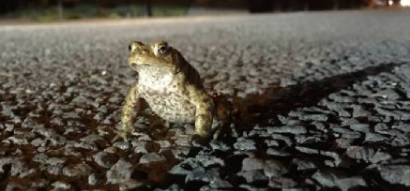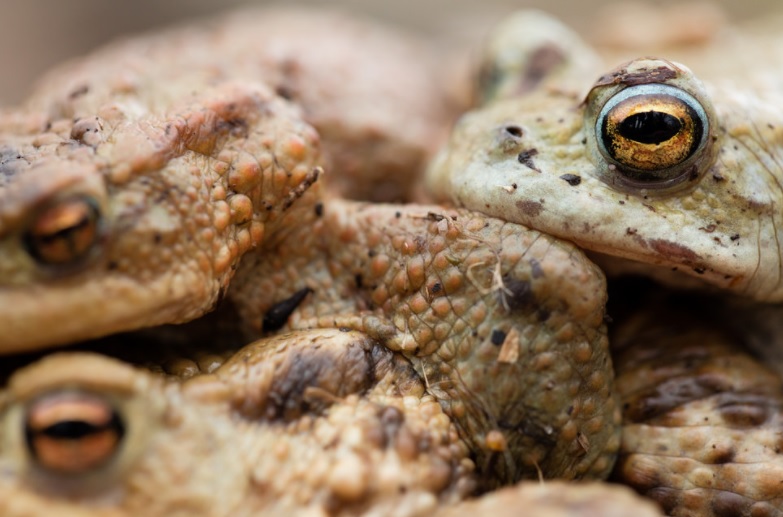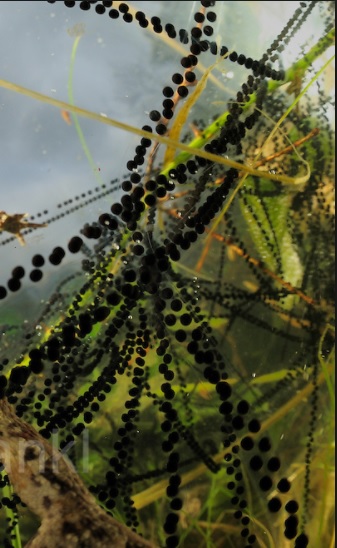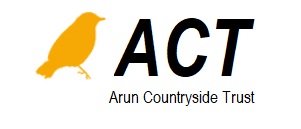The current cold snap has interrupted the annual pilgrimage of toads to their breeding sites. These mysterious amphibians with flame orange eyes and dull and warty skin are scattered throughout the Binsted Woods Complex due to an ample food supply and ideal hibernation sites. Come the winter they tuck themselves away into little pockets that remain frost free, such as holes in banks or beneath mossy dead wood covered in piles of leaf litter. Rising temperatures, increasing day length and plenty of moisture trigger breeding migrations – though always under the cover of darkness.
 This is a dangerous time for toads, especially where roads must be traversed, for thousands end up flattened by drivers. Ironic when one considers Mr. Toad’s penchant for reckless driving (which ultimately landed him a twenty-year prison sentence). To access ponds and rifes in the area, a high number of toads must traverse Binsted Lane and Tortington Lane, which see very few motor cars (and most not driven recklessly), though many road mortalities still occur.
This is a dangerous time for toads, especially where roads must be traversed, for thousands end up flattened by drivers. Ironic when one considers Mr. Toad’s penchant for reckless driving (which ultimately landed him a twenty-year prison sentence). To access ponds and rifes in the area, a high number of toads must traverse Binsted Lane and Tortington Lane, which see very few motor cars (and most not driven recklessly), though many road mortalities still occur.
Part of the problem is the way in which toads move – a low slung walk like a miniature crocodile laboriously moving a foot or so and then stopping for a bit - to such an extent that it may take a full ten minutes to cross a road. Moreover, the determination of a toad to follow the same route to its ancestral breeding site matches the determination of man to build roads in the way. As a consequence many roads have toad patrols to collect these ardent amphibians into buckets and deposit them safely on the other side.
 Come the return of more clement conditions (usually night-time temperatures above 5°C and on the up) normal toad practices will resume. Males emerge first and call for females, though such is their pent-up vigor that they will leap upon virtually anything that moves. Gently waggle a finger in the leaf litter and an ardent male will grab it. There are even reports of fish frantically thrashing about in an attempt to dislodge ardent male toads.
Come the return of more clement conditions (usually night-time temperatures above 5°C and on the up) normal toad practices will resume. Males emerge first and call for females, though such is their pent-up vigor that they will leap upon virtually anything that moves. Gently waggle a finger in the leaf litter and an ardent male will grab it. There are even reports of fish frantically thrashing about in an attempt to dislodge ardent male toads.
Reaching water does not herald an end to danger, for mating is an unruly, competitive and sometimes deadly affair. The male must mount the much bigger female in such a way that enables him to fertilise the strings of eggs as they are released. However, males outnumber females resulting in a rugby scrum of elbowing, shoving, pushing and tussling. This tangle of toads, all attempting to dislodge each other in order to access the female somewhere below, is often referred to as a ‘toad ball’ with up to ten tussling toads. The unfortunate female is sometimes suffocated or crushed in the tangle.
The Madonna Pond is a significant breeding site in the area, with over a thousand toads seen on one night by Paul Stevens last spring (2017). When visiting the pond some time later, the banks were teeming with tiny toadlets, making it impossible to approach for fear of crushing many. The toadlets were leaving the water for a life on land in order to feed and grow. Those that survive will make every attempt to return to this very pond to breed – whatever obstacles man may put in their way.
